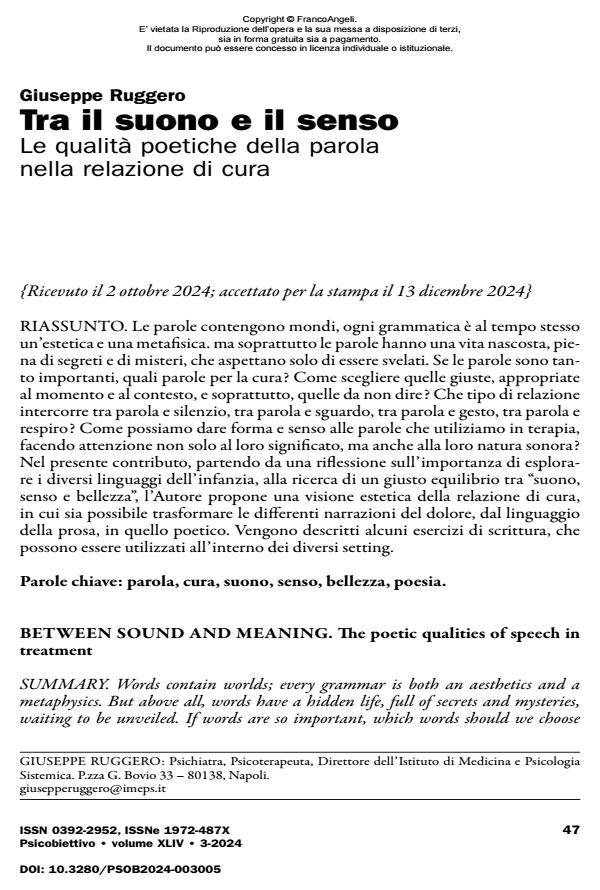Between sound and meaning. The poetic qualities of speech in treatment
Journal title PSICOBIETTIVO
Author/s Giuseppe Ruggero
Publishing Year 2025 Issue 2024/3
Language Italian Pages 21 P. 47-67 File size 195 KB
DOI 10.3280/PSOB2024-003005
DOI is like a bar code for intellectual property: to have more infomation
click here
Below, you can see the article first page
If you want to buy this article in PDF format, you can do it, following the instructions to buy download credits

FrancoAngeli is member of Publishers International Linking Association, Inc (PILA), a not-for-profit association which run the CrossRef service enabling links to and from online scholarly content.
Words contain worlds; every grammar is both an aesthetics and a metaphysics. But above all, words have a hidden life, full of secrets and mysteries, waiting to be unveiled. If words are so important, which words should we choose for Care? How can we select the right ones, appropriate to the moment and the context – and, most importantly, the ones that should remain unspoken? What kind of relationship exists between words and silence, between words and gaze, between words and gesture, between words and breath? How can we shape and give meaning to the words we use in therapy, paying attention not only to their interpretation but also to their sound? In this contribution, starting from a reflection on the importance of exploring the different languages of childhood, in search of the right balance between “sound, meaning, and beauty,” the Author suggests an aesthetic vision of the care relationship, where the different narratives of suffering can be transformed from the language of prose into that of poetry. Several writing exercises are described, which can be used in different therapeutic settings.
Keywords: word, care, sound, meaning, beauty, poetry.
Giuseppe Ruggero, Tra il suono e il senso Le qualità poetiche della parola nella relazione di cura in "PSICOBIETTIVO" 3/2024, pp 47-67, DOI: 10.3280/PSOB2024-003005